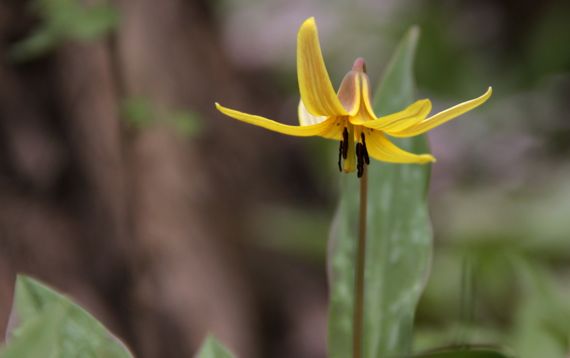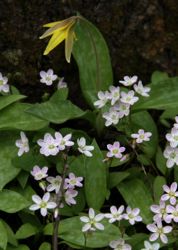
More from David George Haskell’s The Forest Unseen: A Year’s Watch in Nature (2012; pg. 228)—I’ve gotten into December, so I’m almost finished:
The partnership between fungi and plants…is an old marriage, dating to the plants’ first hesitant steps onto land. The earliest terrestrial plants were sprawling strands that had no roots, nor any stems or true leaves. They did, however, have mycorrhizal fungi penetrating their cells, helping to ease the plants into their new world. Evidence of this partnership is etched into fine-grained fossils of the plant pioneers. These fossils have rewritten the history of plants. The roots that we thought were one of the earliest and most fundamental parts of the land plant body turn out to be an evolutionary afterthought. Fungi were the plants’ first subterranean foragers; roots may have developed to seek out and embrace fungi, not to find and absorb nutrients directly from the soil.

Ker-pow! (To the admittedly now ancient biology books I studied in HS.)
And, the trout lily is from yesterday’s excursion to the wildlife refuge. We found it in flowering expanses of valley floor amidst large-flowered trilliums and a smaller flower I keep thinking is a kind of anemone*, but can’t find in my wildflower book. Or don’t recognize the description without a picture that seems identical to me. Here’s my picture, of the little guys with a larger, nodding, um, maybe some kind of bellwort? (Clearly, I’m better at finding than identifying….)
We found the refuge busy with birdlife, too. We saw both trumpeter (I think) swans and ospreys sitting on nests, and many other birds not sitting on nests.
The Guru noted that there are creatures called anemone from both land and sea, and why? I said, must be related to the Greek? origin word. And my dictionary says (ignoring the sea critter): “from Latin, said to be from Greek anemōnē ‘windflower,’ literally ‘daughter of the wind,’ from anemos ‘wind,’ thought to be so named because the flowers open only when the wind blows.” And why wait for the wind (if that is indeed true)? Haskell would say because then its pollen can be distributed farther afield than it would be if the flower just opened and dropped its pollen near the mother-plant’s base. So, the sea version is also bending with the waves and tide, as if flexing in the wind? Ah, digressions.
20 May 2013 at 8:12 pm
Sherry says:
Clatonia caroliniana (Spring beauty).
21 May 2013 at 10:21 am
kayak woman says:
I was just going to say Spring Beauty, not that I’m good at IDing wildflowers, just one I randomly know.
21 May 2013 at 10:24 am
kayak woman says:
P.S. wishing I had more time up there this weekend. I would love to visit the refuge (and you) but there’ll be plenty to do at the moomincabin…
22 May 2013 at 2:49 pm
TMOTU says:
Yup. Spring beauties.